Repair help
How to Fix a Washing Machine That Won't Turn On
AZparts Team
Updated on July 18, 2025
8 min read
Dealing with a washing machine that won't turn on can be incredibly frustrating, especially when you have a pile of laundry waiting to be cleaned. When your washing machine won't turn on or your washer won't start, multiple factors could be preventing normal operation. Fortunately, many common issues can be diagnosed and resolved with the right knowledge and quality replacement parts. AZParts will help you understand the root causes of why your washing machine won't turn on.
_1752815281.jpg&w=3840&q=75)
1. Why won't my washing machine start?
When your washing machine won't turn on, the problem usually stems from power supply issues, door latch problems, or internal component failures. Check the power connection, ensure the door is properly closed, and verify the control panel settings before calling for professional repair.
1.1. There's no power running to the washing machine
Power supply problems are the most common cause of washing machine startup failures, involving faulty electrical connections, damaged power cords, or circuit interruptions. When these issues occur, your washing machine will completely fail to start, display no lights, and remain unresponsive to all controls.
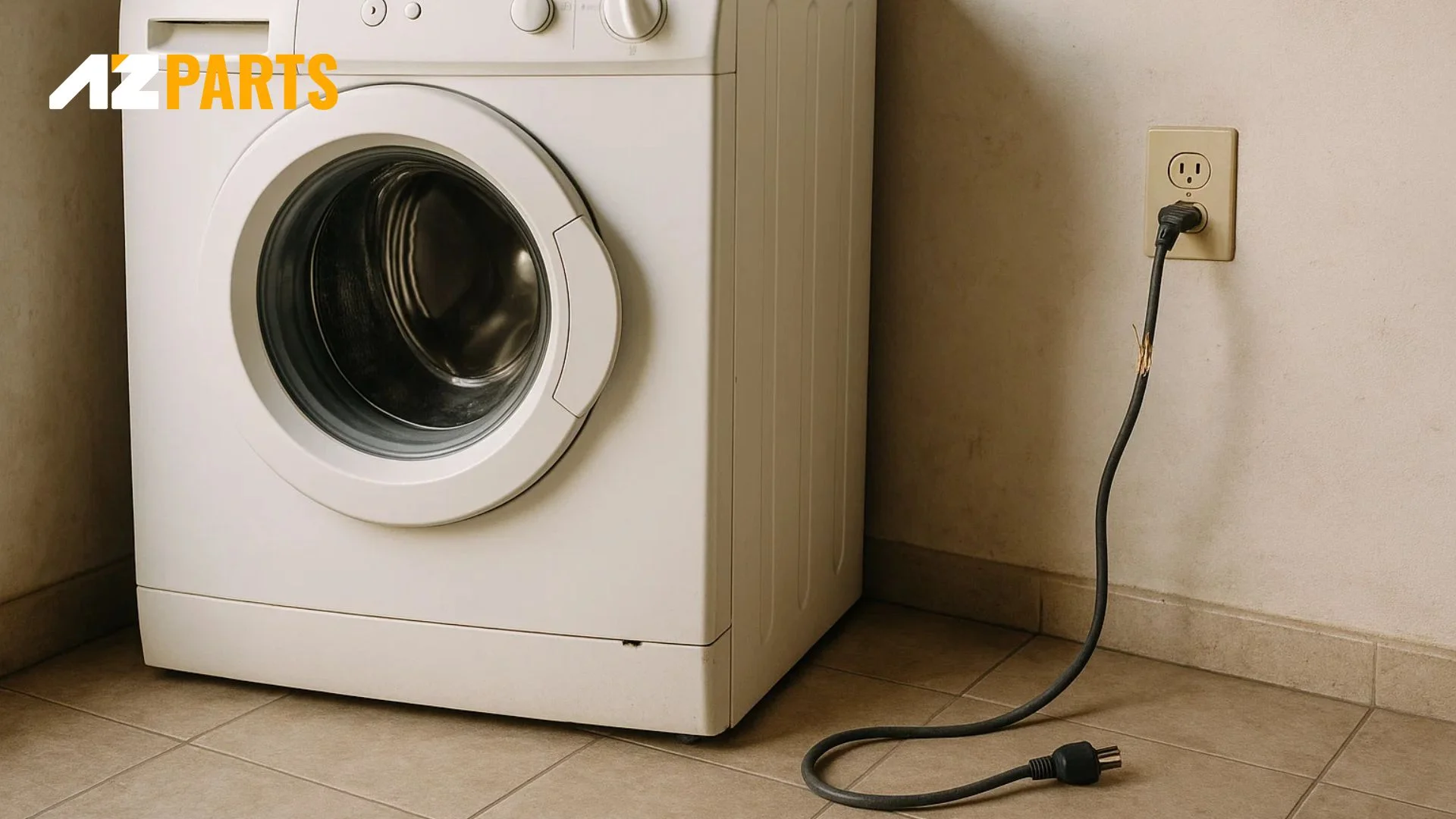
There's no power running to the washing machine (Source: AZParts)
To fix power supply issues, verify the machine is securely plugged in and test the outlet with another appliance. Check your electrical panel for tripped breakers or blown fuses, then inspect the power cord for damage and replace if necessary.
1.2. The washing machine may have overheated
Overheating is a common cause of washing machine startup failures, particularly in units operating heavily or in poorly ventilated spaces. When internal components become excessively hot, thermal protection systems automatically shut down the machine to prevent damage, keeping it from turning on until temperatures return to safe levels.
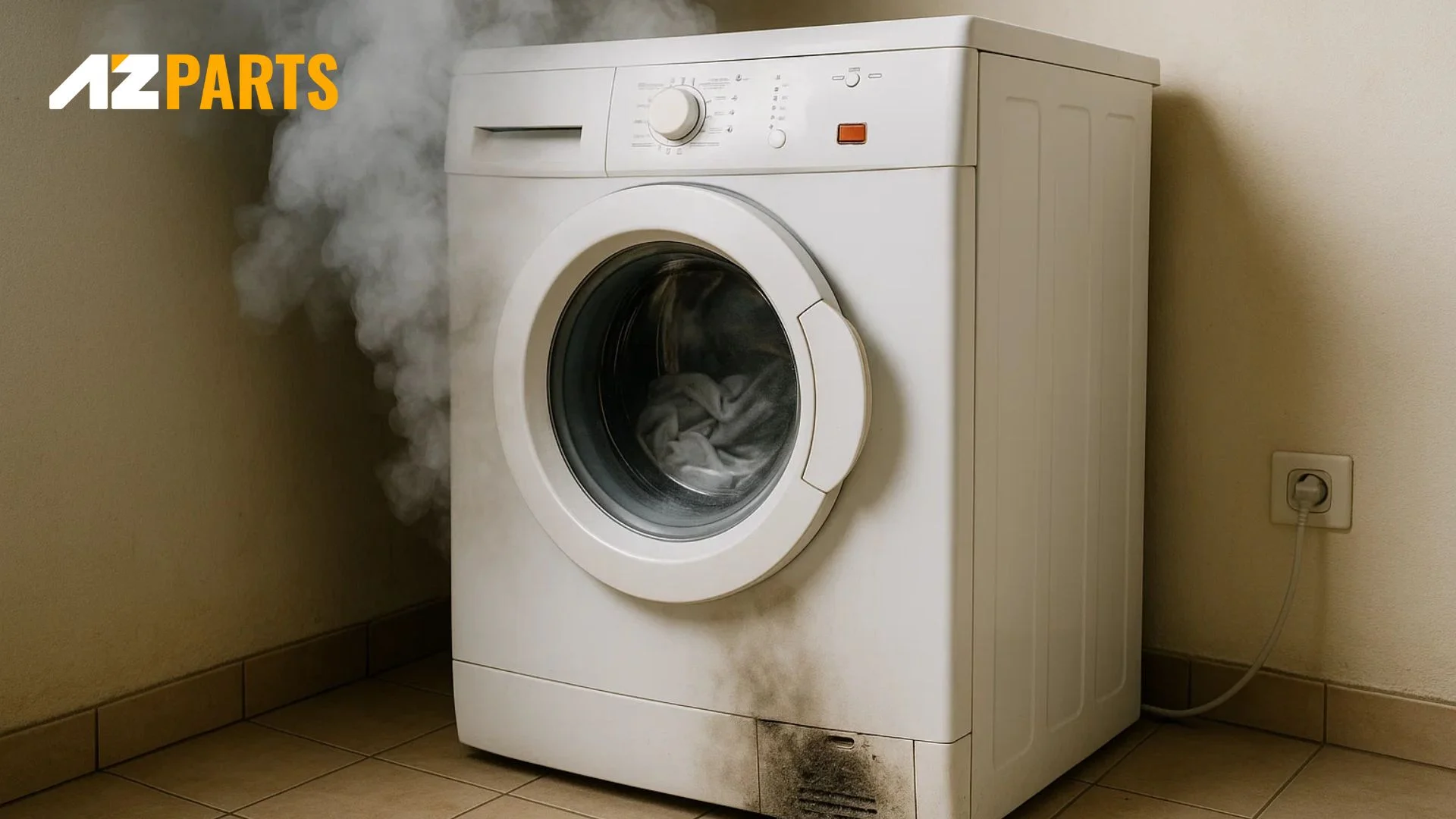
The washing machine may have overheated (Source: AZParts)
To fix overheating issues, disconnect the machine from power and allow it to cool completely for several hours before restarting. Check that adequate clearance exists around the washing machine for proper air circulation, clean any lint or debris from ventilation areas, and press the thermal reset button if your machine has one.
1.3. The settings may have been accidentally adjusted incorrectly
Incorrect settings can prevent your washing machine from starting, even when all mechanical and electrical components function properly. Many modern machines include safety features that prevent operation when certain setting combinations are selected or when required parameters aren't met, such as incompatible water temperature settings with the selected wash cycle.
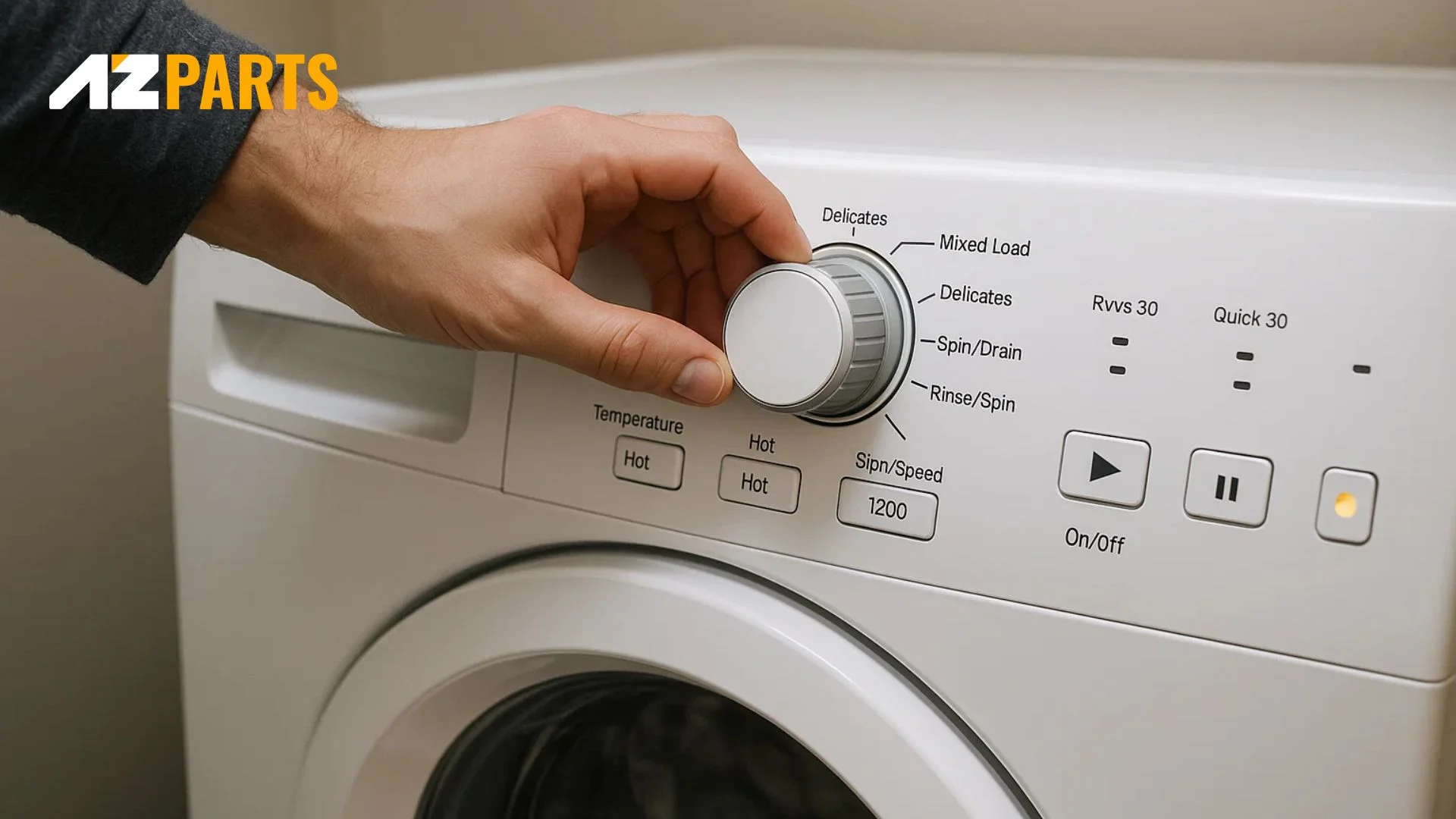
The settings may have been accidentally adjusted incorrectly (Source: AZParts)
To fix setting issues, review all control panel settings carefully, ensuring cycle selection, water temperature, spin speed, and special options are appropriate for your load. Check that you're following the correct sequence of button presses or dial positions to initiate cycles, and verify the machine hasn't entered programming or maintenance mode that requires specific steps to exit.
1.4. The door switch isn’t locking properly
Door switch malfunctions rank among the most frequent causes of washing machine startup failures, as these safety devices prevent operation when the door isn't securely closed and locked. When door switches fail, the washing machine's control system receives incorrect information about door status, preventing the cycle from starting as a safety precaution with symptoms like difficulty closing the door, unusual clicking sounds, or error codes on digital displays.
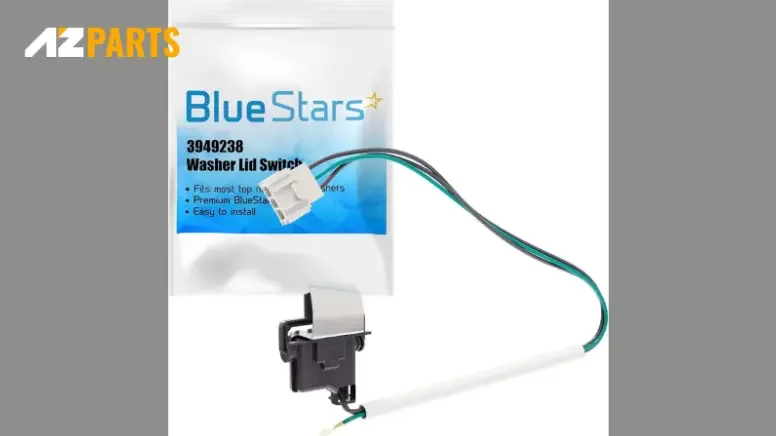
High quality AZParts door switches (Source: AZParts)
To fix door switch issues, first clean any debris or detergent buildup around the door latch area that might prevent proper engagement. If cleaning doesn't resolve the problem, the switch mechanism itself may need replacement due to wear or damage, requiring a new door switch to restore proper locking functionality and ensure safe operation. If you're experiencing door switch issues, washer door switches provide reliable replacement options designed to restore proper door locking functionality and ensure safe washing machine operation.
1.5. The washing machine fuse is blown
Internal fuses protect washing machines from electrical damage by interrupting power flow when current levels exceed safe parameters. When these fuses blow due to electrical surges, lightning strikes, or component malfunctions, the machine loses power to critical systems and prevents startup even when the external power supply remains intact.
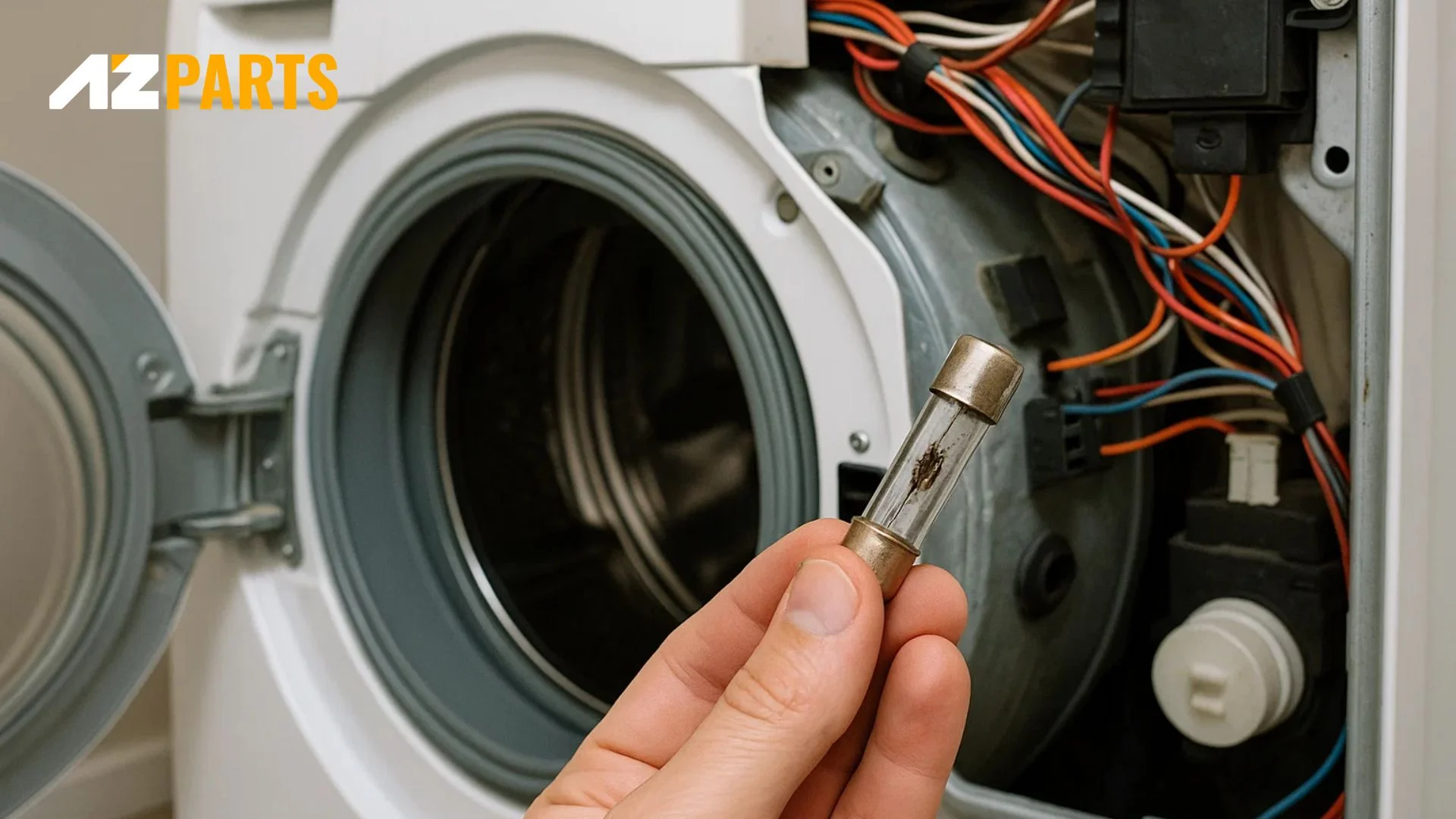
The washing machine fuse is blown (Source: AZParts)
To fix fuse problems, disconnect the machine from power before inspection and use a multimeter to test fuse condition since blown fuses may not show obvious external signs of failure. Some machines include multiple fuses protecting different circuits, so consider consulting a qualified technician for proper diagnosis and replacement if you suspect fuse issues.
1.6. The control knob is faulty
Control knob malfunctions can prevent washing machines from starting by failing to properly communicate cycle selections to the machine's control system. These knobs contain internal switches and contacts that send electrical signals for different wash cycles, but over time these components can wear out, become corroded, or suffer damage from repeated use.
To fix control knob problems, first try cleaning around the knob area and gently working it through all positions to remove any debris or corrosion. If symptoms persist like difficulty turning, inconsistent operation, loose or wobbly feel, or complete lack of response, the knob assembly likely needs replacement to restore proper communication with the control system.
1.7. There could be an issue with the control board
The control board represents the electronic brain of modern washing machines, coordinating all operational functions from cycle timing to water temperature regulation. When control boards fail, they prevent the washing machine from starting by failing to process input signals from buttons, knobs, and sensors, or by being unable to send activation commands to motors, pumps, and solenoids.
To fix control board problems, first try unplugging the machine for 24 hours to reset the system, then check for loose connections or visible damage. If symptoms persist like completely dead machines, erratic behavior, or error codes on digital panels, professional diagnosis is recommended due to their complexity and potential for causing additional damage during amateur repairs.
1.8. The washer motor might be damaged
Motor damage represents one of the more serious causes of washing machine startup failures, as these components are essential for drum rotation and water circulation. When motors fail due to bearing wear, winding damage, electrical problems, or mechanical obstruction, the machine may not start at all or attempt to start but immediately shut down when the control system detects motor problems.
To address motor issues, first check for any obstructions around the drum that might prevent rotation, then listen for distinctive symptoms like unusual noises, burning smells, or humming without rotation. If these symptoms persist or the motor starts but fails to maintain consistent speed, professional diagnosis and replacement are typically required due to the complexity of motor systems and their integration with other components.
1.9. Debris is clogging the drain
Drainage problems can prevent washing machines from starting, particularly in models with sensors that detect water levels or drainage conditions before beginning new cycles. When debris like lint, coins, small clothing items, and soap residue clogs the drain system, residual water remains in the machine, triggering safety systems that prevent startup to avoid overflow conditions.
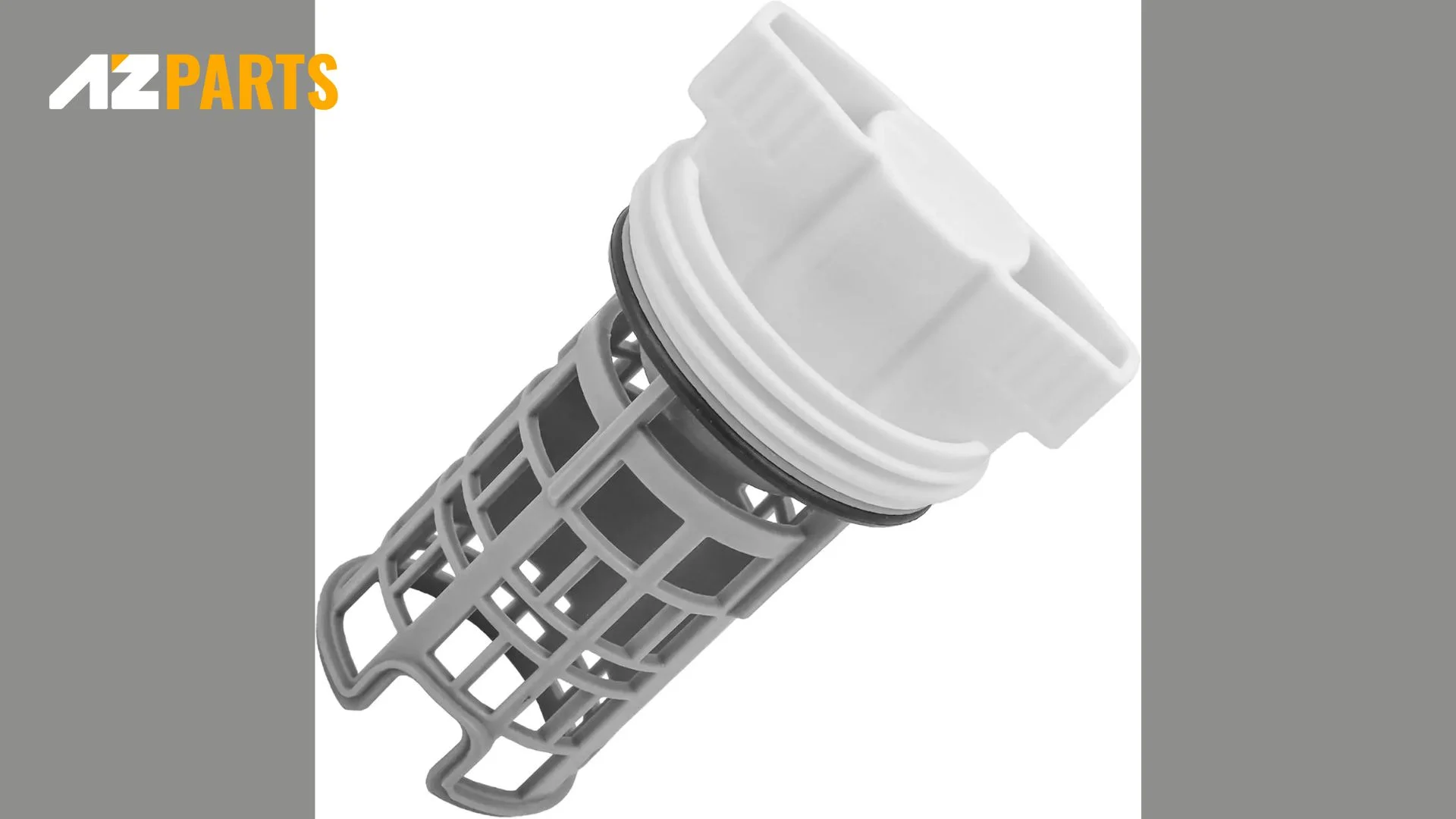
High quality washing pump filters from AZParts (Source: AZParts)
To fix drainage issues, first check for standing water in the drum and clean the drain filter or pump housing to remove accumulated debris. If symptoms persist like slow draining, gurgling sounds, or water remaining after cycles, inspect the drain hose for kinks or blockages and ensure proper installation height to restore normal water evacuation. If you're experiencing drainage-related startup problems, AZParts washing pump filters offer effective solutions for maintaining proper water flow and preventing debris-related failures.
2. FAQs about washing machine won t turn on
2.1. What are common reasons a washer won’t start?
Common causes of washer startup failure include power supply issues (30% of cases), door switch malfunctions, blown fuses, control board failures, and drainage problems. Power issues should be checked first, while door switch problems are also frequent since these safety devices prevent operation when doors aren't properly secured.
2.2. Can I troubleshoot the washer won't start myself?
Homeowners can safely diagnose and fix simple washing machine startup issues like power connections, settings, and minor drainage problems using basic tools. However, electrical components, control boards, and motor problems require professional repair due to safety risks and technical complexity.
2.3. Are modern washers more prone to electronic issues?
Modern washing machines have more electronic components than older models, creating additional failure points but also providing better diagnostics, safety features, and efficiency. While electronic failures are more complex to repair, they typically offer clearer diagnostic information through error codes.
When your washing machine won't turn on, systematic troubleshooting can help identify the root cause and guide you toward appropriate solutions. From simple power supply checks to complex control board diagnostics, understanding the various components that can prevent startup enables more effective problem-solving. Many common issues can be resolved with proper diagnosis and quality replacement parts, while others may require professional service for safe and effective repair.
AZParts provides comprehensive solutions for washing machine repair needs, offering genuine replacement components designed to restore optimal performance. Whether you need door switches, pump filters, or other essential components, our extensive washer parts ensure you can find the right parts for your specific machine model. Don't let a non-starting washing machine disrupt your daily routine – explore our selection of quality replacement parts and get your machine running smoothly again.
Contact Information:
8 The Green, Ste A, Dover, Delaware 19901-3618, United States
support@azparts.com
support@azparts.com
Learn more about common washing machine issues:
Washer
- 1. Why won't my washing machine start?
- 1.1. There's no power running to the washing machine
- 1.2. The washing machine may have overheated
- 1.3. The settings may have been accidentally adjusted incorrectly
- 1.4. The door switch isn’t locking properly
- 1.5. The washing machine fuse is blown
- 1.6. The control knob is faulty
- 1.7. There could be an issue with the control board
- 1.8. The washer motor might be damaged
- 1.9. Debris is clogging the drain
- 2. FAQs about washing machine won t turn on
Further Reading
Further Reading





